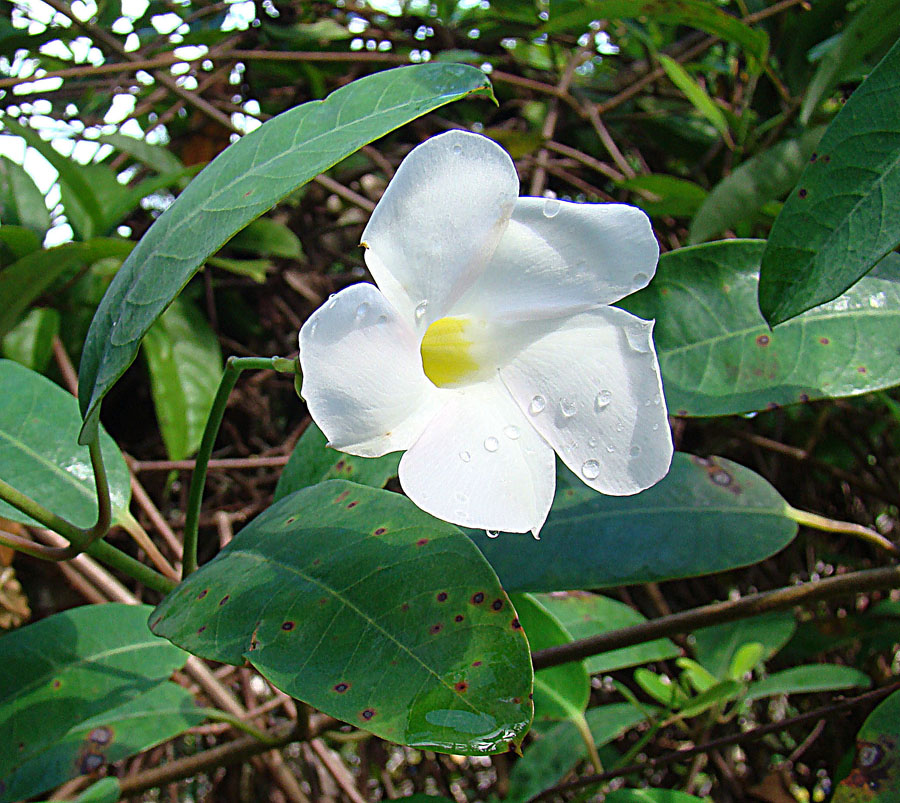Rubbervine
Pictured above: Rubbervine (Rhabdadenia biflora) by Dick Culbert (CC BY 2.0). Click on terms for botanical definitions. View post as a PDF.
Rubbervine is an evergreen flowering vine that occurs in southern Florida’s mangrove swamps and coastal hammocks. Its white to pinkish-white flowers appear in spring through fall, but may bloom year-round if temperatures remain warm.
Flowers are trumpet-shaped with broad, five-lobed corollas and pale yellow throats. They are borne near the tips of the stem. Leaves are dark green with conspicuous pinnate veination. They are oblong, have entire margins, and are oppositely arranged. Stems are smooth and produce a milky sap when broken. Seeds are borne in elongated pods.
Family: Apocynaceae (Dogbane family)
Native range: Coastal counties from Brevard to the Keys and Charlotte to Monroe
To see where natural populations of rubbervine have been vouchered, visit florida.plantatlas.usf.edu.
Hardiness: Zones 9B-11
Soil: Moist to moderately dry calcareous or saline soils
Exposure: Full sun to partial shade
Growth habit: 12’+ long twining vine
Propagation: Division, seed
Garden tips: Rubbervine works well as a container plant but is best on a trellis because of its twining habit. However, it should be pruned regularly to keep it blooming at a lower, more visible level. (Pruning also encourages more flowering.) Rubbervine may initially require considerable watering, but is fairly drought tolerant once established.
Rubbervine plants are not commercially available, although some specialty growers occasionally carry it.

